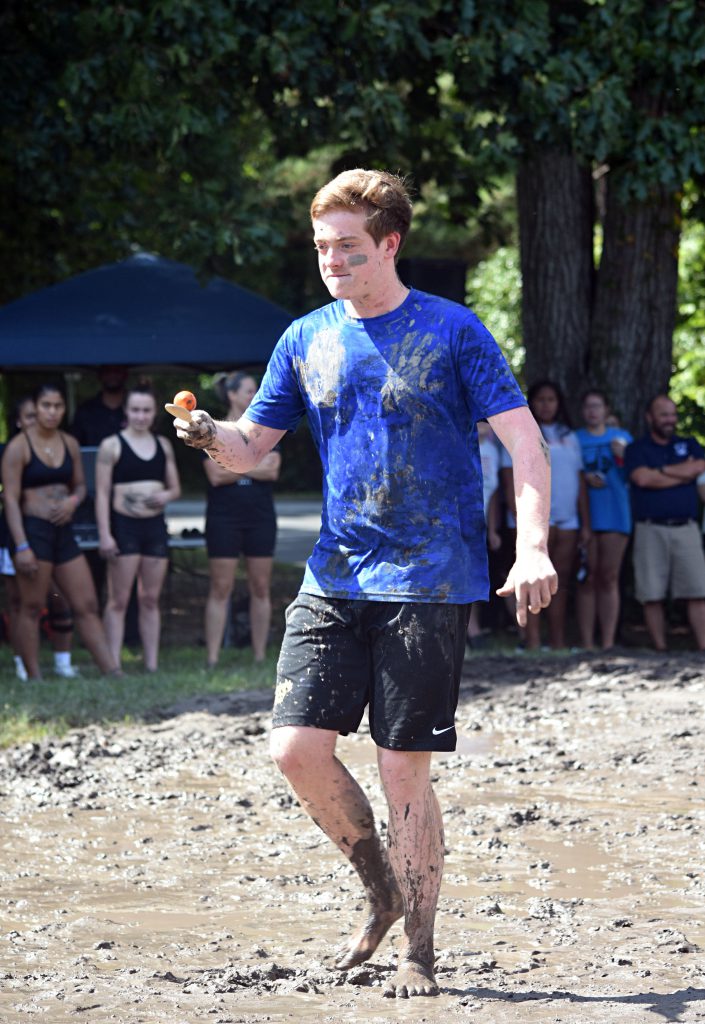Roe v. Wade, one of the most influential Supreme Court cases, continues to hold relevance in our lives today. With the original decision made in 1973, this case gave women the right to have control over their own bodies and legal protection to have an abortion if they chose to do so.
From March 31 to April 3, Virginia Wesleyan University’s Fine and Performing Arts Department put on the production of “ROE” by Lisa Loomer, a play that delves not just into the specifics of that titular court case but also into the personal lives and stories of so many involved.
The play follows the life of Norma McCorvey, a woman who wanted to get an abortion but was legally unable to, and the efforts and success of Sarah Weddington, a lawyer, in taking the case all the way to the Supreme Court in order to establish those rights for women.

Left to right: Bri Allen as Sarah Weddington, Sophia Kaminaris as Norma McCorvey and Kayla
Bissette as Linda Coffee in the “ROE” production that was performed from March 31 to April 3.
Additionally, it follows what happened upon the conclusion of the actual case. It follows McCorvey’s journey through her relationship with her girlfriend, Connie Gonzales, and her eventual advocacy for Operation Rescue, a pro-life organization dedicated to the prevention of what Roe v. Wade intended to accomplish.
As the writer affirms, the intention of this production is not meant to sway any one person to a specific side or position. Instead, the goal is to open up viewers to a whole range of possible perspectives and to the difficulty of separating the individual from their projected beliefs. The cast and crew of “ROE” embodied this vision by shedding more light on the lives of real characters.
Sophomore Sophia Kaminaris played the part of McCorvey and talked about how interesting it was to embody such a complicated character. She emphasized the importance of communities being proactive in providing spaces to instigate and explore conversations on societally-viewed taboo topics such as abortion.
“This needs to be done in colleges in general,” Kaminaris said. “I think it’s important for our generation to see a play about this issue that is not targeted to be one opinion or one view.”
And although the show might be topically the subject of abortion, its true value for spectators lay in its focus on individual people. Junior Ryan Abraham, a viewer, agreed that the show was centered around explaining people’s personal lives.
“I didn’t know anything about Roe as a person [prior to the show],” Abraham said. The fact that she joined the pro-life movement, was a lesbian, and that her name wasn’t even Roe were all things learned through the show’s intimate approach.
Upon the conclusion of each show, a talkback session was held with both cast and audience in order to promote discussion. The hope was that the audience would gain a more realistic connection to the message and perspectives introduced in the play.
“The comment I got the most [during these talkbacks] from the audience was that people said they loved how much they hated my character,” Kaminaris said.
People were connected to the fact that this was a real story with real people that had the ability to evoke both disappointment and the desire for admiration by proxy of accomplishments.

From March 31 to April 3, VWU’s Fine and Performing Arts Department put on “ROE” by Lisa Loomer.
Junior Kayla Bissette, who played many different roles with different morals and viewpoints, touched on this idea as well.
“It’s interesting playing characters whose mindsets vary from your own,” Bissette said.
She related the ability for these perspectives to portray the humanity of the characters.
By showing all of these different perspectives and actions people take as a result of those perspectives, the humanity and realism of the “other” group, whether that’s pro-life or pro-choice, is able to be seen. Their natural place as enemies in our minds gets replaced by this image of a person with a life story.
The student viewer response was overwhelmingly positive and receptive to the production of this play. Junior Elaine Robbins appreciated its ability to emphasize the personal lives of those involved in the case and liked how she experienced first-hand how theatre “can expand your worldview on controversial issues.”
Overall, the theatrical experience of “ROE” was something that shocked, thought-provoked and opened up the minds of those who saw it. Providing this space where the open mind could be expanded and where the legislation could be explored was impactful and powerful to those who viewed and participated in it.
Phoebe Cox
pecox@vwu.edu



